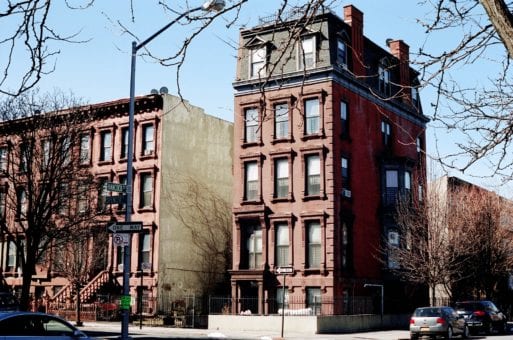
Apartment buildings, neighborhoods, and even small towns can qualify as NORCs.
Credit: Brandon Nickerson
More seniors are choosing to age in place — often becoming unwitting members of Naturally Occurring Retirement Communities. Meanwhile, others deliberately move to join such communities, where they can feel more supported in their elder years, while younger residents leave. And as the Baby Boomer generation continues to age, experts are predicting an explosion of NORCs, along with an increased supply of services to support them.
Demographics are rapidly shifting in the U.S., with some 73 million Baby Boomers expected to reach retirement age by 2030. Meanwhile, surveys show that most prefer to age in place. A 2018 survey from the American Association of Retired Persons found that 77% of Americans age 50 and older prefer to remain in their community as long as possible, while just 59% anticipate that they will be able to do so. For some, NORCs provide the ideal solution.
NORCs are loosely defined as geographic areas with significant numbers of older residents that weren’t designed as senior living spaces. Michael Hunt, who first coined the term based on his study of Wisconsin neighborhoods in the 1980s, considered NORCs to include apartment buildings, neighborhoods or other areas in which at least half of residents are age 60 or older. Other researchers and local governments have since created different definitions based on varied age cut-offs and their representation within the population.
Healthy NORCs Provide Activity, Community and Wellness
A 2006 study published in the American Journal of Public Health found that healthy NORCs were characterized by an active and vibrant community, access to basic amenities within walking distance, interpersonal contact, adequate transportation and other factors. In order to thrive, many NORCs rely on organized partnerships to offer additional services such as healthcare management, social services, recreation and volunteer opportunities.

Seniors at a NORC enjoy a game of cards outdoors
Credit: Craig Adderley
One organization in northern Michigan, Blueprint for Aging, works to support senior citizens and increase their quality of life through community collaboration in Washtenaw County. New York, meanwhile, has dozens of NORCs, some of which are funded by the New York State Office for the Aging. Others receive funding from the New York City Department of Aging to provide fitness classes, case management assistance and outings, as well as to meet other health and social needs.
For many seniors, it’s the best of all worlds. “Everything is within easy walking distance – just two blocks from groceries, restaurants, health clubs, banks, pet stores and medical and dental clinics. There’s even a typewriter repair shop,” wrote John Stark in an article for Next Avenue after moving to a NORC in Richfield, Minnesota. Stark gained an added bonus when he found out he was younger than most of his neighbors. “At 63, I love it when they call me ‘young man,'” he wrote.

 The Rise of Naturally Occurring Retirement Communities
The Rise of Naturally Occurring Retirement Communities


 “Songbird” by Fleetwood Mac
“Songbird” by Fleetwood Mac

 How to Comfort A Dying Loved One
How to Comfort A Dying Loved One














